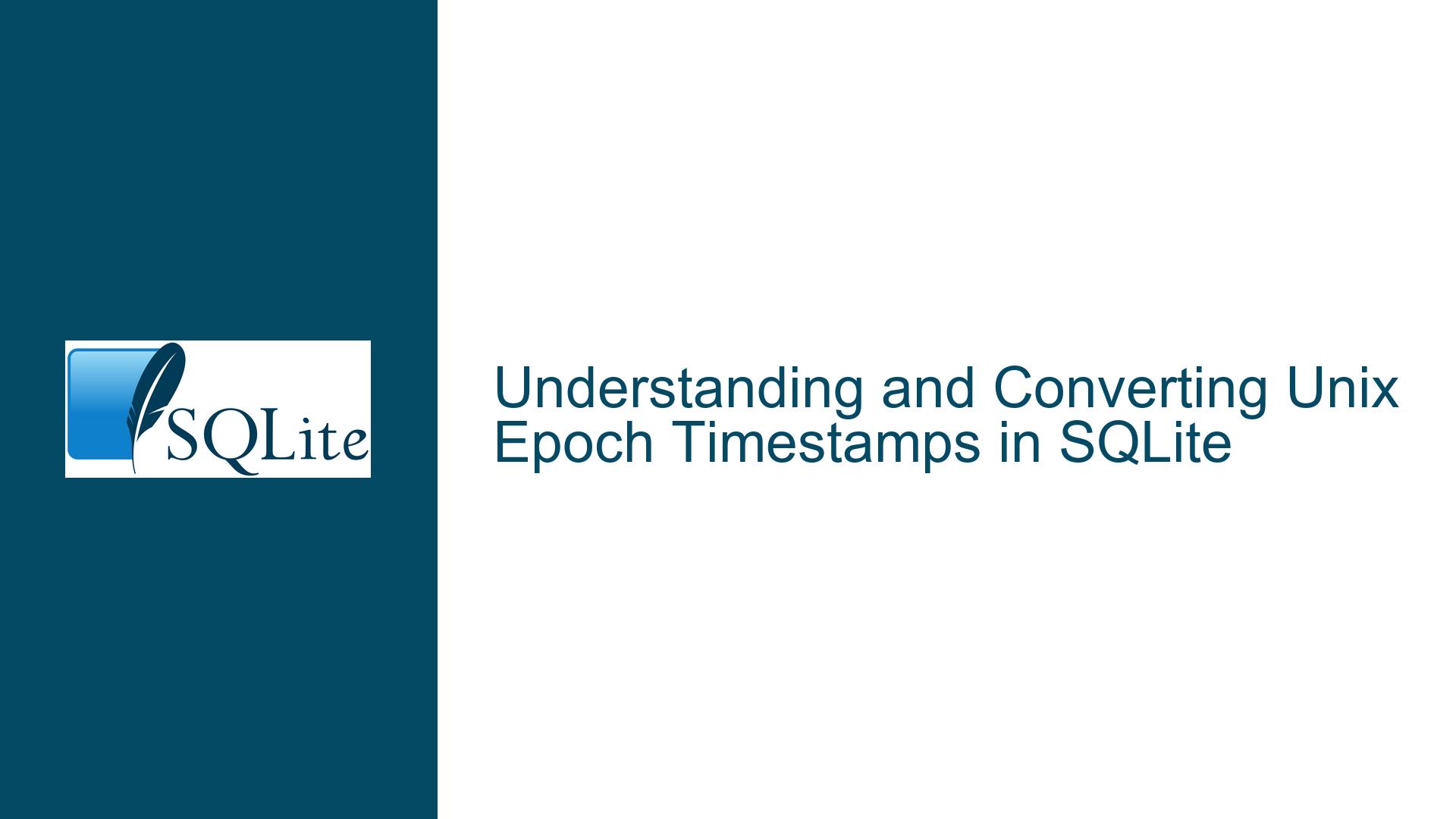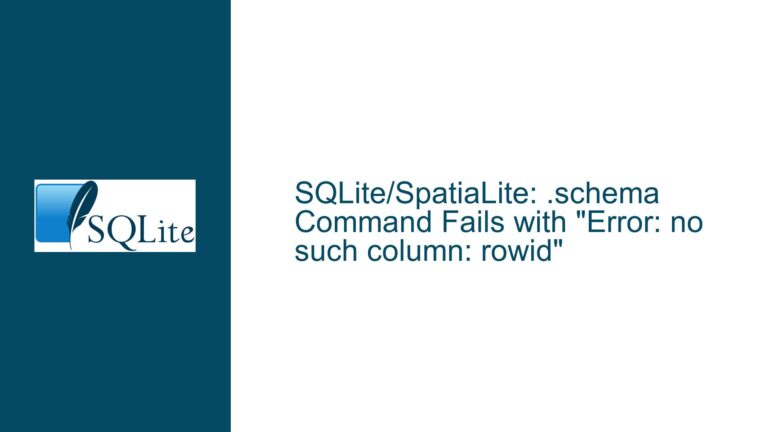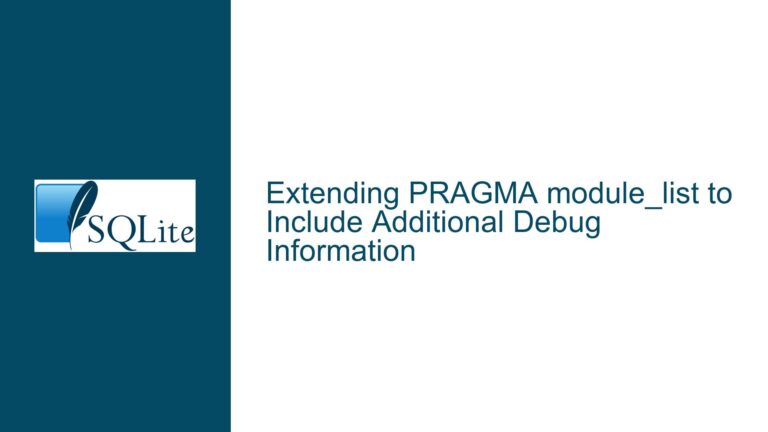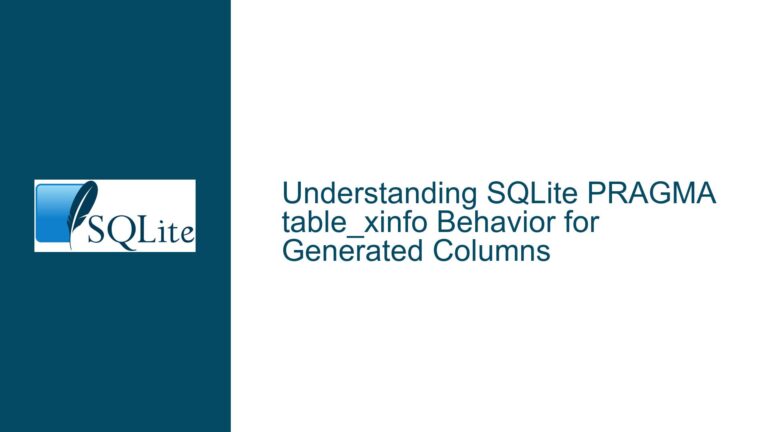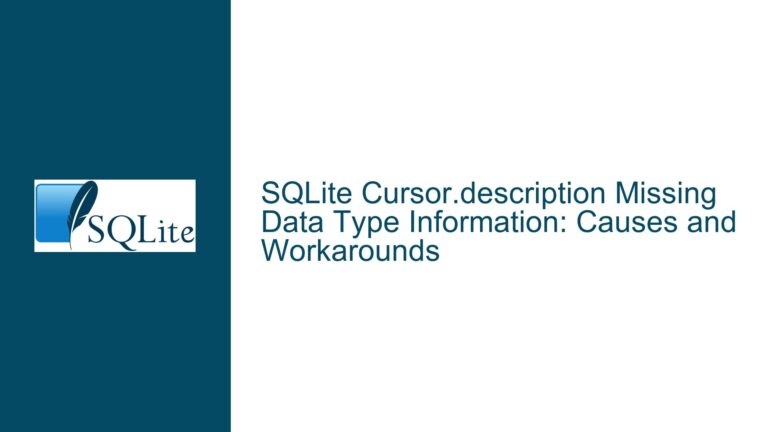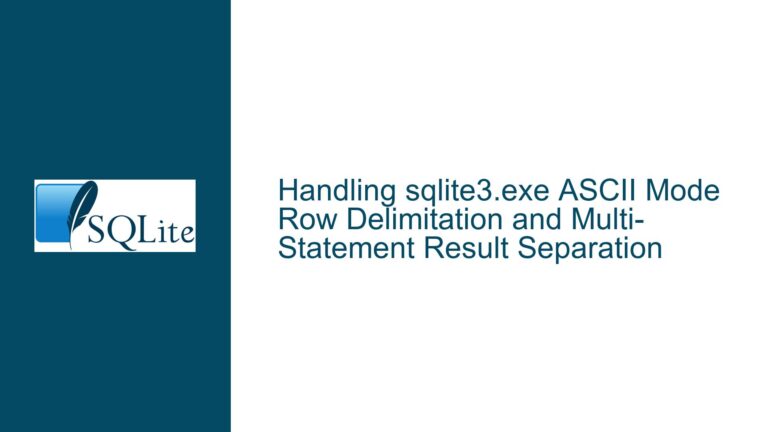and Converting Unix Epoch Timestamps in SQLite
Unix Epoch Timestamps in SQLite Databases
When working with SQLite databases, particularly those that store date and time information, it is not uncommon to encounter fields that contain long numerical values instead of human-readable dates. These numerical values are often Unix Epoch timestamps, which represent the number of seconds that have elapsed since January 1, 1970, 00:00:00 UTC (the Unix epoch). This format is widely used in computing due to its simplicity and ease of manipulation in various programming languages and database systems.
In the context of SQLite, the Date_Created field in the "web data" file from Chrome, which displays a value like 1603562938, is a classic example of a Unix Epoch timestamp. This value corresponds to a specific point in time, which can be converted into a more familiar date and time format using SQLite’s built-in date and time functions.
Understanding how to work with Unix Epoch timestamps in SQLite is crucial for database developers and analysts who need to interpret, manipulate, and present date and time data accurately. This guide will provide a comprehensive overview of Unix Epoch timestamps, their representation in SQLite, and the methods available for converting these timestamps into human-readable formats.
Interpreting Unix Epoch Timestamps in SQLite
Unix Epoch timestamps are stored as integers in SQLite databases, representing the number of seconds since the Unix epoch. This format is particularly useful for storing date and time information in a compact and efficient manner, as it avoids the complexities associated with different date and time formats across various locales and systems.
In SQLite, the Date_Created field containing the value 1603562938 can be interpreted as follows:
- The value
1603562938represents the number of seconds that have passed since January 1, 1970, 00:00:00 UTC. - To convert this value into a human-readable date and time format, SQLite provides the
datetimefunction, which can be used to transform Unix Epoch timestamps into a more familiar format.
For example, the following SQL query can be used to convert the Unix Epoch timestamp 1603562938 into a human-readable date and time:
SELECT datetime(1603562938, 'unixepoch');
This query will return the result 2020-10-24 20:08:58, which corresponds to the date and time represented by the Unix Epoch timestamp 1603562938.
It is important to note that the datetime function in SQLite assumes that the input timestamp is in UTC. If the timestamp is stored in a different time zone, additional adjustments may be required to accurately convert the timestamp into the desired local time.
Converting Unix Epoch Timestamps to Human-Readable Formats
SQLite provides several built-in functions that can be used to manipulate and convert Unix Epoch timestamps into various date and time formats. These functions include datetime, date, time, and strftime, each of which offers different levels of flexibility and control over the output format.
Using the datetime Function
The datetime function is the most commonly used function for converting Unix Epoch timestamps into human-readable date and time formats. The function takes two arguments: the Unix Epoch timestamp and the modifier 'unixepoch', which indicates that the input value is a Unix Epoch timestamp.
For example, the following query converts the Unix Epoch timestamp 1603562938 into a human-readable date and time:
SELECT datetime(1603562938, 'unixepoch');
The result of this query will be 2020-10-24 20:08:58, which represents the date and time in the format YYYY-MM-DD HH:MM:SS.
Using the date Function
The date function can be used to extract only the date portion of a Unix Epoch timestamp. This function also takes two arguments: the Unix Epoch timestamp and the modifier 'unixepoch'.
For example, the following query converts the Unix Epoch timestamp 1603562938 into a human-readable date:
SELECT date(1603562938, 'unixepoch');
The result of this query will be 2020-10-24, which represents the date in the format YYYY-MM-DD.
Using the time Function
The time function can be used to extract only the time portion of a Unix Epoch timestamp. Like the datetime and date functions, it takes two arguments: the Unix Epoch timestamp and the modifier 'unixepoch'.
For example, the following query converts the Unix Epoch timestamp 1603562938 into a human-readable time:
SELECT time(1603562938, 'unixepoch');
The result of this query will be 20:08:58, which represents the time in the format HH:MM:SS.
Using the strftime Function
The strftime function offers the most flexibility in formatting Unix Epoch timestamps. This function allows you to specify a custom format string to control the output of the date and time. The strftime function takes three arguments: the format string, the Unix Epoch timestamp, and the modifier 'unixepoch'.
For example, the following query converts the Unix Epoch timestamp 1603562938 into a custom date and time format:
SELECT strftime('%Y-%m-%d %H:%M:%S', 1603562938, 'unixepoch');
The result of this query will be 2020-10-24 20:08:58, which is the same as the output of the datetime function. However, the strftime function allows for more complex formatting, such as including the day of the week or displaying the time in a 12-hour format.
For example, the following query uses the strftime function to display the date and time in a more verbose format:
SELECT strftime('%A, %B %d, %Y %I:%M:%S %p', 1603562938, 'unixepoch');
The result of this query will be Saturday, October 24, 2020 08:08:58 PM, which includes the day of the week, the full month name, and the time in a 12-hour format with an AM/PM indicator.
Handling Time Zones in Unix Epoch Timestamps
One of the challenges of working with Unix Epoch timestamps is handling time zones. Unix Epoch timestamps are always stored in UTC, but the date and time they represent may need to be displayed in a different time zone. SQLite provides several modifiers that can be used to adjust the output of the datetime, date, time, and strftime functions to account for different time zones.
For example, the following query converts the Unix Epoch timestamp 1603562938 into a human-readable date and time in the America/New_York time zone:
SELECT datetime(1603562938, 'unixepoch', 'localtime');
The result of this query will be 2020-10-24 16:08:58, which represents the date and time in the America/New_York time zone (UTC-4 during daylight saving time).
If you need to convert the timestamp into a different time zone, you can use the timezone modifier. For example, the following query converts the Unix Epoch timestamp 1603562938 into a human-readable date and time in the Asia/Tokyo time zone:
SELECT datetime(1603562938, 'unixepoch', '+9 hours');
The result of this query will be 2020-10-25 05:08:58, which represents the date and time in the Asia/Tokyo time zone (UTC+9).
Storing and Retrieving Unix Epoch Timestamps in SQLite
When designing a database schema that includes date and time information, it is important to consider how the data will be stored and retrieved. Unix Epoch timestamps are a popular choice for storing date and time information in SQLite due to their simplicity and efficiency.
To store a Unix Epoch timestamp in an SQLite database, you can use an INTEGER column. For example, the following SQL statement creates a table with a Date_Created column that stores Unix Epoch timestamps:
CREATE TABLE web_data (
id INTEGER PRIMARY KEY,
Date_Created INTEGER
);
To insert a Unix Epoch timestamp into this table, you can use the strftime function to generate the current timestamp in Unix Epoch format:
INSERT INTO web_data (Date_Created) VALUES (strftime('%s', 'now'));
This statement inserts the current date and time as a Unix Epoch timestamp into the Date_Created column.
To retrieve and convert the Unix Epoch timestamp into a human-readable format, you can use the datetime function in your query:
SELECT id, datetime(Date_Created, 'unixepoch') AS Date_Created FROM web_data;
This query retrieves the id and Date_Created columns from the web_data table, converting the Date_Created timestamp into a human-readable date and time format.
Best Practices for Working with Unix Epoch Timestamps in SQLite
When working with Unix Epoch timestamps in SQLite, there are several best practices that can help ensure the accuracy and efficiency of your database operations:
Always Store Timestamps in UTC: Unix Epoch timestamps are inherently based on UTC, so it is best practice to store all timestamps in UTC to avoid confusion and ensure consistency across different time zones.
Use the
unixepochModifier: When converting Unix Epoch timestamps into human-readable formats, always use theunixepochmodifier to ensure that SQLite interprets the timestamp correctly.Consider Time Zone Adjustments: When displaying timestamps to users, consider adjusting the time zone to match the user’s local time. This can be done using the
localtimemodifier or by manually adjusting the timestamp with thetimezonemodifier.Use
strftimefor Custom Formatting: If you need to display timestamps in a specific format, use thestrftimefunction to customize the output. This function provides the most flexibility in formatting date and time information.Validate Timestamps: When inserting or updating timestamps in your database, ensure that the values are valid Unix Epoch timestamps. This can be done using SQLite’s built-in functions or by validating the data in your application code.
Backup Your Database Regularly: As with any database, it is important to regularly back up your SQLite database to prevent data loss in the event of corruption or other issues.
Conclusion
Unix Epoch timestamps are a powerful and efficient way to store date and time information in SQLite databases. By understanding how to interpret and convert these timestamps into human-readable formats, database developers and analysts can effectively manage and present date and time data in their applications. SQLite’s built-in date and time functions, such as datetime, date, time, and strftime, provide the tools needed to work with Unix Epoch timestamps, while best practices such as storing timestamps in UTC and considering time zone adjustments ensure the accuracy and consistency of the data.
By following the guidelines and techniques outlined in this guide, you can confidently work with Unix Epoch timestamps in SQLite, ensuring that your database operations are both efficient and accurate. Whether you are designing a new database schema, optimizing existing queries, or troubleshooting date and time-related issues, a solid understanding of Unix Epoch timestamps and their handling in SQLite is an invaluable skill for any database professional.
